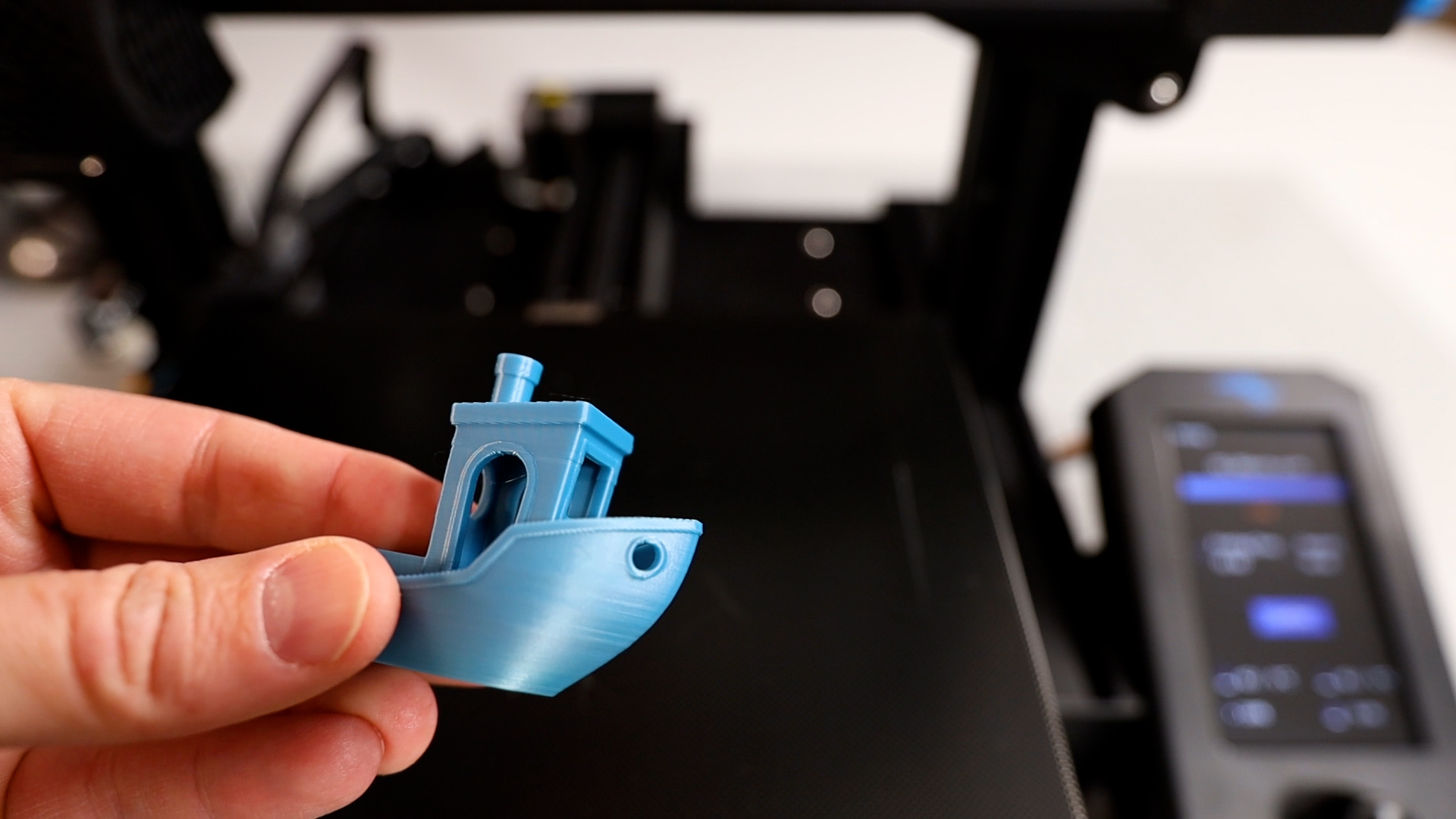

- #Ultimaker cura ender 3 v2 settings how to#
- #Ultimaker cura ender 3 v2 settings pdf#
- #Ultimaker cura ender 3 v2 settings manual#
However, you can only use it if the filament you are removing is almost finished. It is also gentle on the hot-end mechanism.


This method has the big advantage of ensuring that all the remaining filament is pulled out of the nozzle, minimizing the chances of a clog. This prevents the filament from unwinding again. Secure the end of the filament in one of the holes cut into the sides of the spool holder.Wind up the remaining filament back into its spool and cut away any trailing remains.You can keep doing this until all the filament is out, or you can grab the end coming out of the nozzle (make sure to wear protective gloves for this) and pull it out. Push the filament through the extruder until it comes out at the nozzle.You can now pull or push the filament easily with your fingers. Pinch the clamp on the extruder kit to release the tension on the filament.Wait until the extruder has reached the required temperature.
#Ultimaker cura ender 3 v2 settings manual#
The most recommended method is manual extrusion. They are all pretty straightforward, but we will go through all of them anyway. There are several methods you can follow to remove the filament currently loaded on your Ender 3. If that’s the technique you’re aiming for, you should set your extruder temperature to 90 0C for PLA and 130 0C. Note that there is a specific procedure for removing filament from your 3D printer called cold-pulling. Here is a guide on the recommended extrusion temperature for the other filament types.

Set the nozzle temperature to 200 oC – 220 0C for PLA or 230 0C-250 0C for ABS. Next, click again on the control knob, then select Control > Temperature > Nozzle. Your choice will depend on the existing filament in the extruder. To do this, open the menu by clicking on the control button and select Prepare > Preheat PLA or Preheat ABS. The extruder needs to be hot for the filament already in to melt so that you can pull it out easily. The first step is to turn the printer on and preheat it.
#Ultimaker cura ender 3 v2 settings pdf#
If you want to learn more about the assembly and operation of your Ender 3 3D printer, this PDF user guide
#Ultimaker cura ender 3 v2 settings how to#
Instead, we will make this a comprehensive guide covering the preparation phase, removing the old filament, loading the new filament, and some useful tips no one else will tell you about how to do this like an expert. We don’t want to assume that you already know how to operate your Ender 3, a machine beloved for its supreme quality and print control features. Some veterans can even weld the two filaments together or change filament mid-print with no adverse effects. There are a lot of things that could go wrong during this otherwise routine procedure, including clogging the nozzle, damaging the hot end, and poor print quality after the change.Īs you perform more projects and pick up some experience with your Creality Ender 3, you will learn how to predict and avoid the most common problems experienced when changing the filament on a 3D printer. Learning how to change filaments on an Ender 3 may seem like child’s play, but it’s not. We may earn a commission through products purchased using links on this page.


 0 kommentar(er)
0 kommentar(er)
